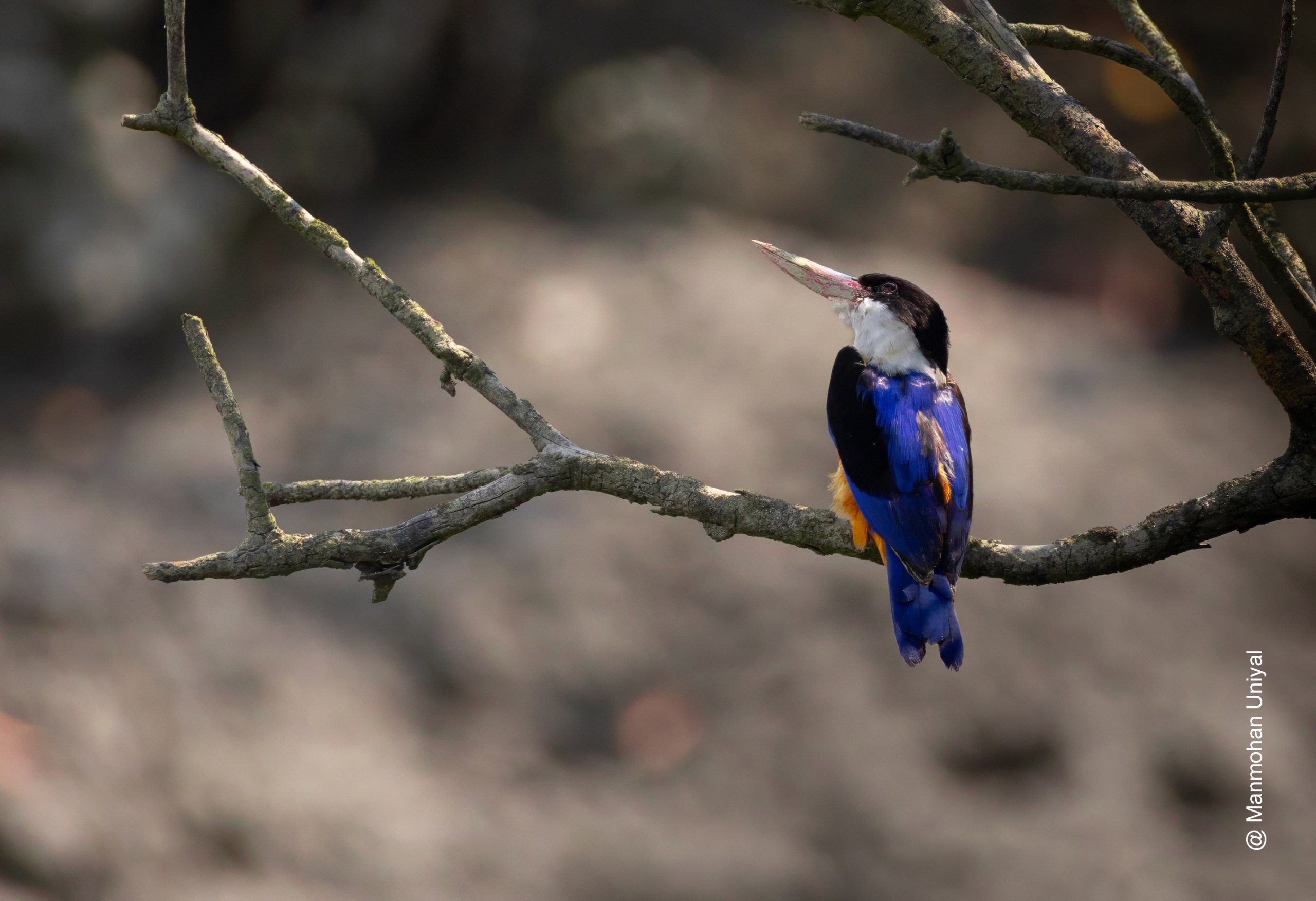The Sundarbans, a UNESCO World Heritage Site, is a unique and expansive mangrove forest known for its diverse wildlife, including the famous Bengal tiger. However, for birdwatchers, the Sundarbans is a hidden gem with a wealth of bird species, both resident and migratory. If you’re planning a birdwatching trip to the Sundarbans, you’ll be amazed by the variety of birds that call this ecosystem home. From colorful kingfishers to majestic storks, the Sundarbans birding experience is unmatched in its beauty and diversity.
Geographical Features of the Sundarbans
Located at the delta of the Ganges, Brahmaputra, and Meghna rivers, the Sundarbans is the largest mangrove forest in the world. Spanning over 10,000 square kilometers, this unique wetland ecosystem is shaped by the daily tides of the Bay of Bengal, creating a dynamic environment that supports a vast range of wildlife. The Sundarbans mangrove forest is made up of a complex network of rivers, mudflats, and islands, making it the perfect habitat for many bird species. The dense mangrove trees offer shelter and nesting grounds, while the intertidal zones and waterways provide abundant food sources.
Best Birdwatching Spots in the Sundarbans
If you’re heading to the Sundarbans for birdwatching, here are some must-visit spots:
- Sajnekhali Bird Sanctuary: One of the best-known birdwatching spots in the Sundarbans, the Sajnekhali Bird Sanctuary offers the chance to see a wide variety of waterbirds and wading birds. The sanctuary is home to many species, and the watchtower provides an excellent vantage point.
- Netidhopani: Known for its freshwater ponds and rich birdlife, Netidhopani is another popular spot for birdwatching in the Sundarbans. It’s an excellent location for seeing a mix of resident and migratory birds.
- Sudhanyakhali Watch Tower: This watchtower offers panoramic views of the Sundarbans’ waterways, making it a great place to spot waterbirds and raptors.
- Bonnie Camp: Offering one of the highest watchtowers in the Sundarbans, Bonnie Camp provides sweeping views of the mangrove forest and rivers, perfect for birdwatching.
- Dobanki Watch Tower: Known for its canopy walk, the Dobanki Watch Tower allows bird lovers to observe birds up close, especially those nesting in the treetops.
Birds of the Sundarbans: Endemic and Migratory Species
The Sundarbans is home to an array of bird species, including many endemic and migratory birds. The unique landscape of the Sundarbans mangroves and wetlands attracts a variety of birdlife, making it a popular destination for birdwatching tours.
Endemic Birds of the Sundarbans
- Mangrove Whistler: Found exclusively in mangrove habitats, this bird is one of the key species you can spot during your Sundarbans birdwatching trip.
- Brown-winged Kingfisher: Known for its striking brown and orange plumage, this kingfisher is a regular sight in the mangroves.
- Black-capped Kingfisher: Another vibrant species, the Black-capped Kingfisher is frequently seen along the Sundarbans’ waterways.
- Sundarbans Babbler: An endemic bird, well-adapted to the mangrove ecosystem.
- Lesser Adjutant Stork: A large wading bird commonly seen in the wetlands.
Migratory Birds in the Sundarbans
The Sundarbans serves as a wintering ground for many migratory birds, especially during the cooler months:
- Siberian Rubythroat: This small bird migrates to the Sundarbans from its breeding grounds in Siberia, escaping the cold.
- Pied Avocet: A wader with a distinctive curved bill, the Pied Avocet is often seen feeding in the shallow waters.
- Eurasian Curlew: A familiar sight in the wetlands during winter, known for its long, curved beak.
- Common Shelduck: Migrating from Europe and Central Asia, the Common Shelduck can be spotted in the Sundarbans’ waterways.
- Greater Flamingo: Occasionally, flocks of Greater Flamingos are seen in the shallow waters, adding a splash of pink to the landscape.
Highlighted Bird List of the Sundarbans
If you’re keen on birding in the Sundarbans, here’s a list of some birds you can spot:
- Mangrove Whistler
- Brown-winged Kingfisher
- Black-capped Kingfisher
- Collared Kingfisher
- Lesser Adjutant Stork
- Black-headed Ibis
- Grey-headed Fish Eagle
- Pallas’s Fish Eagle
- Eurasian Curlew
- Pied Avocet
- Black-tailed Godwit
- Great Egret
- Indian Cormorant
- Spotted Redshank
- Asian Openbill
- Common Greenshank
- Little Stint
- Ruddy Turnstone
- White-throated Kingfisher
- Peregrine Falcon
- Osprey
- Whiskered Tern
The Sundarbans is a remarkable destination for birdwatching, offering bird lovers a chance to see a wide variety of species in a breathtaking natural environment. Whether you’re interested in spotting the elusive Mangrove Whistler or witnessing the migratory journey of the Pied Avocet, the Sundarbans birding experience is one of the most rewarding in India. With its dense mangrove forests, tidal waterways, and rich biodiversity, the Sundarbans is truly a birdwatcher’s paradise. So, if you’re passionate about wildlife and birdwatching, make sure to include the Sundarbans in your next adventure.
To reach the Sundarbans, the nearest major city is Kolkata, from where you can begin your journey. From Kolkata, you can take a train or bus to Canning, which is about 48 km away. From Canning, local boats are available to take you into the heart of the Sundarbans. Alternatively, you can hire a taxi from Kolkata to Godkhali, the gateway to the Sundarbans, located around 100 km from the city. From Godkhali, you will need to board a boat to explore the various islands and wildlife sanctuaries of the Sundarbans.

